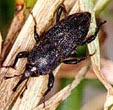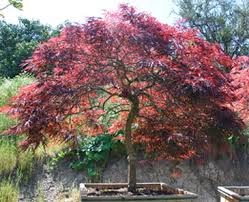As we shopped for seed, we came across a term that was new to me, Endophyte-enhanced turf grass. This is what I'm talking about.
Endophytes are a fungi that naturally infect the blades of grass. Not a harmful fungi, a beneficial fungi that makes the grass resistant to insects and diseases. Studies have shown that Endophyte infected grasses are less likely to be damaged by insects such as billbugs, cinchbugs, and sod webworms. The chemical that lives withing the plant does not harm the grass plant, but the insects don't fair as well. Some bugs are repelled by the plant, where other bugs eat the blades and are poisoned. The natural compound in the plant works on surface feeding insect.
 |
| Billbug |
 |
| Cut worm |
 |
| Sod web worm |
Endophyte-enhanced grass also has been shown to resist stresses of heat and drought, and recovers better in the fall.
 |
| Excessive usage of Water on Lawns |
Endophyte-enhanced seed blends have also shown resistance to diseases like dollar spot, and red thread.
 |
| Dollar Spot |
 |
| Red Thread Why does this fungi seem so important? In our efforts to reduce chemicals in the landscape, Endophyte-enhanced grass is environmentally friendly and are not genetically modified (GMO). The time saved and money spent on chemical treatments is a great eco-friendly choice in the landscape. The seed producers have gone to great lengths to show the benefits in their products. Many Fescue, Ryegrass, and Bluegrass blends are available. Local seed formulated in your area are probably best to deal with insects, diseases, and the climate. Landscapes that are sunny, shady, dry, or high traffic areas have specific blends. Local garden centers that sell seed can usually advise you on what seed will meed your requirements. A list of grass varieties can be accessed at The National Turfgrass Evaluation Program at www.ntep.org/. Endophyte-enhanced grasses are not to be used in pastures where grazing animals feed. Cattle and horses get very sick and have died eating Endophyte-enhanced pastures. But what if you have a cat or dog that munches on grass occasionally. An Assistant Professor from the University of Illinois, Urbana-Champaign College of Veterinary Medicine, Sandra Yi, states that there is no danger for our domestic pets. There has never been a toxic reaction that has been reported for these animals. Over seeding the lawn with these Endophyte-enhanced seed can go a long way to get your grass more organic. I wrote a post earlier this week about dormant seeding the lawn during winter. So, getting more and more Endophyte-enriched seed integrated into the lawn will reduce the need for pesticides, minimal fertilizers, and water. Over seeding in the fall will also benefit the lawn. Just make sure that the seed is Endophyte-enhanced, makes contact with the soil, and is kept moist until it germinates. Annual over seeding will enhance weak, thin grass, and will fill in bare spots. |








































